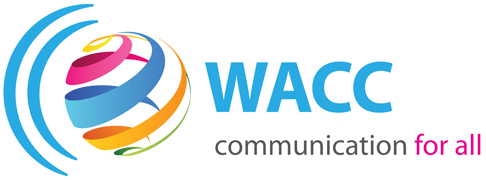
25 Apr 2025 Latin American Indigenous communities hone communication tools to protect way of life
Indigenous activists in eight Latin American countries can better defend their lands by using more professional and secure methods to collect data and evidence, thanks to a project by WACC partner PAKKIRU, the Kichwa Nation in the Pastaza region of Ecuador.
The School of Communication and Free Technologies for the Common Defense of the Territory in Latin America (Common School) has equipped participants to mount a successful case in the courts and media demonstrating the environmental impacts of mega-projects that threaten their lands, explains Efren Merino, project coordinator for PAKKIRU.
Merino says the Indigenous nation increasingly saw that they needed “concrete data that provides tangible evidence in order to build strong narratives in the field of territorial defense” and launched the school in response.
Co-funder for the project was Cultural Survival, a long-time WACC partner.
Achieving technological sovereignty
The Kichwa Nation of Pastaza is descended from the native peoples who inhabited the Ecuadorian Amazon, and have, according to Merino, a family-like structure with collective practices based on ancestral knowledge and self-government, among other principles.
He notes that, in addition to collecting concrete data, it is essential that the Kichwa Nation can manage and protect this data in trusted, community-managed environments. In this regard, autonomous servers become crucial.

Twenty-four Indigenous activists—half of them women—from 12 organizations completed the four-month-long Common School. The hybrid training focused on three key areas: social and environmental documentation, archival methodologies, and autonomous servers.
The school trained communities in advanced information-gathering and management techniques, enabling them to create and maintain legally useful memory archives.
The focus on social and environmental documentation means that the Kichwa Nation can now build a solid basis for legal claims by recording evidence of the local impacts of and resistance to mega-projects threatening their territorial and cultural integrity, according to Merino.
The training in archiving methodologies ensured that information is stored and organized in an efficient and accessible manner, facilitating its use in judicial and communication processes, he adds.

Merino highlights the creation of the first autonomous server network in Abya Yala or Latin America as a key achievement of the Common School.
“This network represents a crucial advance in the digital sovereignty of communities, allowing them to have full control of their technological infrastructure and data, independent of large private providers.”
This approach reduces dependence on large corporations and offers a more flexible infrastructure that is adaptable to local needs, he says.
Tools to communicate truth
Specific modules designed for the school focused on the use of open-source intelligence, audio-visual verification, and community truth-building.
The project coordinator noted that one particularly noteworthy module teaches the use of satellite imagery and mapping tools to locate incidents in communities.
The project also brought together the participants in the school with some 550 other communicators in Latin America at the hybrid event “Dialogues Without Borders” to explore community-based communication strategies and interaction with new technologies.
 “The focus on popular education and participatory learning methodologies allowed communities to be active actors in their own training process, resulting in a strong sense of ownership and commitment to the defense of their territory,” says Merino. “One of the unexpected results was the high demand for follow-up sessions, especially on visual evidence collection.”
“The focus on popular education and participatory learning methodologies allowed communities to be active actors in their own training process, resulting in a strong sense of ownership and commitment to the defense of their territory,” says Merino. “One of the unexpected results was the high demand for follow-up sessions, especially on visual evidence collection.”
Participants in the Common School run by PAKKIRU hone skills in digital technologies to defend their territories in the heart of the Ecuadorian Amazon. Photo: PAKKIRU
WACC works in partnership with PAAKIRU and other communication rights and sustainable development organizations worldwide through its Communication for All Program (CAP), with support from Bread for the World-Germany.



Sorry, the comment form is closed at this time.